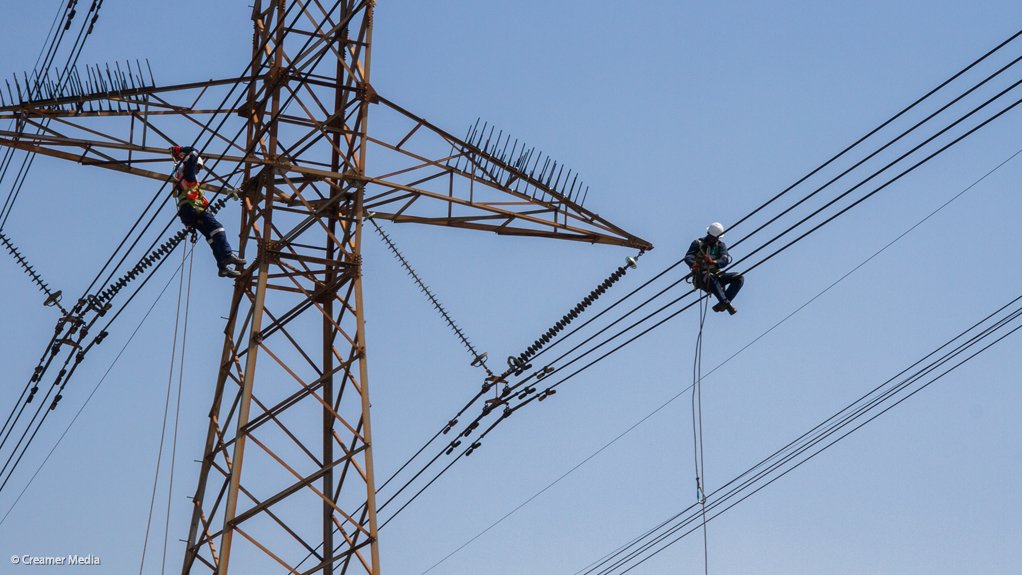Electricity Minister Kgosientsho Ramokgopa says the current plan for rolling out grid infrastructure, particularly in the coming three years, is insufficient to end loadshedding and should, thus, be accelerated with the support of private investment, as well as funding from the Just Energy Transition Investment Plan (JET-IP).
In his inaugural briefing for 2024, Ramokgopa highlighted that, following a recent memorandum of understanding clarifying his powers relative to those of Public Enterprises Minister Pravin Gordhan, he had been given responsibility for ensuring that transmission-related constraints were addressed.
He had also been given authority to issue requests for information and proposal for the financing of new transmission lines and to develop and agree on financing models with National Treasury and the Presidency.
Under the prevailing Transmission Development Plan, only 1 675 km of line is planned for construction by 2027, leaving the lion’s share of 14 218 km proposed for construction under the plan to be deployed from 2028 to 2032.
The backend nature of the investment profile has been heavily criticised by local industry, which has warned that it will be unable to make the manufacturing and skills investments required to participate in the later steep rise in grid expenditure.
Ramokgopa suggested that at least 6 000 km of new lines would be required in the coming three years but acknowledged that Eskom’s balance sheet was insufficient to cater for such investment.
The scenario was also unlikely to change once the National Transmission Company South Africa (NTCSA), which was currently being separated from the vertically integrated utility, was established.
“I’m of the opinion that you need to do significantly more than the [1 675 km over the coming three years], I think we need to be closer to 6 000 km.
“Of course, the Eskom balance sheet does not allow for that and that’s why the Minister [of Electricity] is expected to work out a solution on how best to finance that, without relinquishing State ownership of the grid, but tapping into private sector liquidity.”
Cabinet had not yet approved a specific plan allowing for the private sector to participate in the building and operation of new grid infrastructure, but Ramokgopa expressed optimism that such a framework would be approved soon.
He also stressed that the financing models being considered would seek to ensure that the national finances were not placed under undue strain in future and that the transmission assets were ultimately transferred to the NTCSA.
Once the financing model was approved, Ramokgopa indicated that the intention was to pursue grid procurement through a “dedicated body”, most probably a development finance institution, which would be less bureaucratically encumbered than would be the case should such contracting be performed by a government department.
Lessons would be drawn from the model used for the procurement of new generating capacity and Ramokgopa reported he was in talks with both the Development Bank of Southern Africa and the Industrial Development Corporation about their possible involvement.
The Minister also saw a specific role for the funding committed by France, Germany, the European Union, the UK and the US under the JET-IP to support an acceleration in grid investment.
In late 2023, South Africa published its JET-IP implementation plan amid news of fresh funding flows and confirmation that the commitments had been expanded to $9.3-billion, from an initial $8.5-billion, after the Netherlands and Denmark added their support to the plan.
Ramokgopa indicated that, once he returned from the World Economic Forum in Davos, Switzerland, there would be a formal engagement on how the JET-IP funding could be unlocked to support the financing of new transmission infrastructure.
“Now that the road has been paved, and we know what the responsibility of the Ministry is, we can move with full speed to [seek to access those funds], of course working closely with Minister Barbara Creecy, because she is the one who coordinates government interaction with the International Partners Group.”
EMAIL THIS ARTICLE SAVE THIS ARTICLE ARTICLE ENQUIRY
To subscribe email subscriptions@creamermedia.co.za or click here
To advertise email advertising@creamermedia.co.za or click here











